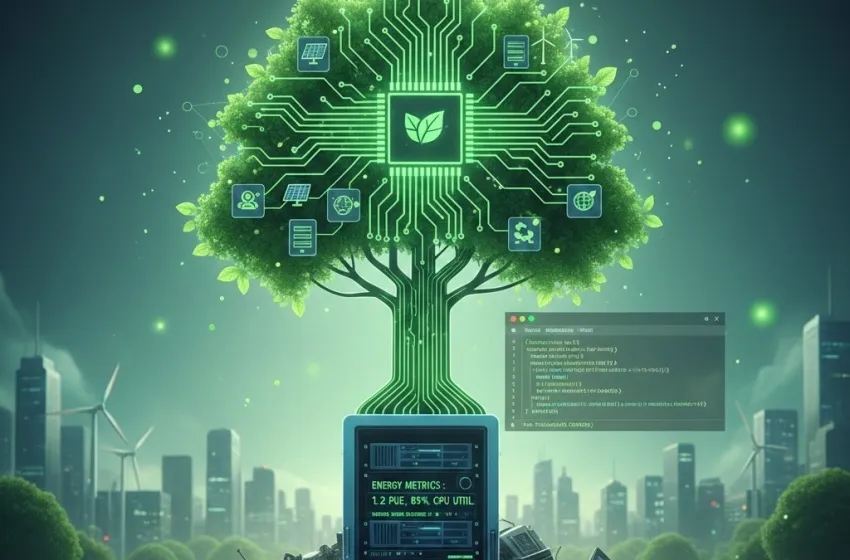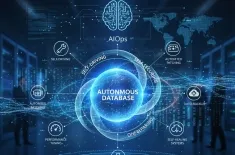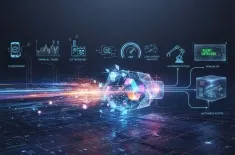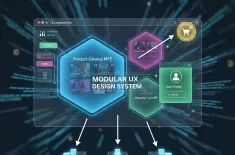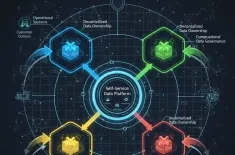Learn about software efficiency, energy metrics, and low-carbon software architecture.
The digital world, while intangible, has a very real physical footprint. Every line of code executed, every data packet transmitted, and every server humming in a data center consumes electricity and contributes to global carbon emissions. The scale of this consumption is immense and growing rapidly, demanding a fundamental shift in how we approach technology creation. This is the premise of Green Software Engineering (GSE), an emerging discipline focused on minimizing the environmental impact of software throughout its entire lifecycle.
Green software is a design paradigm where the primary goal, alongside functionality and performance, is environmental sustainability. It champions a new set of principles and practices focused on building and running software that minimizes the consumption of electricity and hardware resources. This shift from pure speed and feature-driven development to resource-conscious design is essential for creating a truly sustainable digital future.
The Core Principles of Green Software Engineering
Green Software Engineering is guided by a core set of principles that serve as the foundation for creating sustainable applications. These principles combine concepts from climate science, energy markets, hardware design, and traditional software engineering.
Carbon Efficiency
The ultimate goal of green software is carbon efficiency: minimizing the amount of carbon dioxide equivalent (CO2e) emitted per unit of value delivered by the application. Since carbon emissions are fundamentally linked to the source of the electricity consumed, this principle underpins all others.
Carbon-Aware Development:
This principle goes beyond simply using less energy and introduces the concept of when that energy is consumed. Applications should be designed to shift computational loads to times and locations where the electricity grid’s carbon intensity (the CO2e emitted per unit of electricity) is lowest—typically when renewable sources like solar and wind power are most abundant. This is often referred to as Demand Shaping.
Practice Example: Scheduling large, non-critical batch jobs (like data analysis or model training) to run during off-peak hours or in cloud regions known for high renewable energy usage.
Energy Efficiency
Energy efficiency is the most direct way to reduce a software's carbon footprint. It is the practice of performing the same computation or delivering the same service using the least amount of electricity possible. Every saved joule of energy means less power draw from the grid.
Algorithmic Optimization:
The choice of algorithms and data structures has a profound impact on energy use. An algorithm with better time complexity (e.g., O(n log n) instead of O(n2)) will require fewer computational cycles, leading to significant reductions in power consumption, especially as data scales.
Resource Management:
This includes meticulous sustainable coding practices. It means minimizing CPU cycles, optimizing memory usage, reducing disk I/O, and ensuring that idle resources are properly scaled down or powered off. Profiling tools become indispensable here for identifying the most energy-hungry parts of the code.
Hardware Efficiency (Embodied Carbon)
Hardware manufacturing is resource-intensive, and the carbon emitted during the production, transportation, and eventual disposal of a device is known as embodied carbon.
Maximizing Lifespan:
The principle of hardware efficiency dictates that we maximize the useful life and utilization of all hardware—from data center servers to end-user devices. This involves building lightweight applications that don't prematurely tax a device's resources (like battery life or storage capacity), thereby delaying the need for replacements and reducing e-waste.
Efficient Resource Utilization:
In a data center, this means ensuring servers are highly utilized (a concept known as Energy Proportionality), rather than sitting idle and still drawing significant power. Cloud technologies like containers, serverless functions, and virtualization are key enablers here, allowing resources to be right-sized and scaled dynamically.
Low-Carbon Software Architecture
Achieving these principles requires a shift in architectural design. Low-carbon software architecture is intentionally lean, scalable, and built for software efficiency. It rejects bloat and over-engineering in favor of minimal, well-optimized systems.
Lean and Modular Design
Avoid Feature Bloat:
Only build features that are essential and frequently used. Unused code and features still take up space, consume maintenance resources, and contribute to larger, less-efficient deployments.
Microservices and Serverless:
Modular architectures, such as those based on microservices or serverless functions, allow independent scaling of components. Instead of keeping a massive monolithic application running 24/7, you can scale individual services down to zero when they are not in use, drastically reducing idle power consumption.
Asynchronous and Event-Driven Patterns:
Favor non-blocking, asynchronous communication (e.g., message queues) over synchronous or constant polling. This prevents services from idling while waiting for a response and optimizes throughput for lower compute overhead.
Data Center and Cloud Optimization
The infrastructure hosting the software is a huge source of emissions. Architects must make conscious decisions about hosting environments.
Cloud Region Selection:
Choosing a cloud region that is powered by a higher percentage of renewable energy directly lowers the operational carbon footprint of the application.
Data and Network Efficiency:
Minimize the amount of data transferred and stored. Techniques include:
- Data Compression: Compressing data sent over the network.
- Caching: Implementing aggressive caching policies (at the edge, on the server, and in the client) to reduce the need for repeat computations and data fetching.
- Optimized Queries: Writing efficient database queries to minimize I/O and processing load on the server.
Measurement and Accountability: Energy Metrics
A crucial tenet of Green Software Engineering is that you cannot improve what you cannot measure. Establishing robust energy metrics and accountability is mandatory for driving sustainability improvements.
The Software Carbon Intensity (SCI) Metric
The Green Software Foundation advocates for the Software Carbon Intensity (SCI) specification, which provides a simple, standard way to measure the rate of carbon emissions from a software system. The basic formula is:
SCI = (E / R) M
Where:
- E is the total energy consumed by the software system.
- R is the functional unit (the unit of work, e.g., 'per user hour,' 'per API call,' or 'per transaction').
- M is the embodied carbon (CO2e of hardware) amortized over the system's useful life.
By tracking SCI, teams can quantify the environmental impact of changes to their code or architecture. A successful green optimization is one that leads to a measurable reduction in the SCI score for a given functional unit.
Key Energy Metrics
| Metric | Description | Green Software Goal |
|---|---|---|
| PUE (Power Usage Effectiveness) | Ratio of total facility energy to IT equipment energy (Data Center Metric) | Closer to 1.0 (Less wasted energy on cooling/lights) |
| CPU Utilization | Percentage of time a CPU is busy. | Maximize useful utilization to minimize idle time, but ensure resources aren't over-provisioned. |
| Carbon Intensity | gCO2e per kWh of electricity at the location. | Schedule workloads for times/regions with lower intensity. |
| Data Transferred | Total network traffic generated. | Minimize through caching and compression. |
Sustainable Coding Practices: The Developer’s Role
The responsibility for green software rests largely with the individual developer engaging in sustainable coding. This involves a conscious effort to write code that is inherently less demanding on resources.
Code and Algorithm Optimization
Choose Efficient Languages and Libraries:
Some programming languages (like C, Rust, or Go) are inherently more energy-efficient than others (like Python or Ruby) due to lower-level memory management and compilation. While choice depends on the task, opting for lighter frameworks is always a positive step.
Minimize Computations and Loops:
Every loop, every variable assignment, and every function call consumes energy. Developers should rigorously review code to eliminate unnecessary processing, redundant calculations, and inefficient iteration patterns.
Efficient Memory Management:
Memory usage directly impacts power consumption. Reducing memory allocation, avoiding memory leaks, and optimizing garbage collection can reduce the load on the CPU and the need for larger, power-hungry RAM modules.
Network and Frontend Optimization
The client side (web browser or mobile app) is often overlooked but contributes significantly to emissions, especially through battery drain.
Minimize JavaScript:
Large JavaScript bundles increase processing time and consume more battery on end-user devices. Practices like tree-shaking, lazy loading, and using smaller libraries are critical.
Asset Optimization:
Compress and optimize all digital assets, especially images and videos, using modern, efficient formats (e.g., WebP, SVG).
Reduce Network Chatter:
Design APIs and client-side logic to reduce the number of requests and the volume of data transferred. Use techniques like GraphQL or partial responses to fetch only the necessary data.
Green Software Engineering is not just an environmental imperative; it is a business opportunity. By embracing these principles, organizations can achieve significant cost reductions through optimized cloud consumption, improve application performance, and align with growing corporate ESG (Environmental, Social, and Governance) commitments. It represents a mature evolution of the software industry, recognizing that long-term success requires a balance between technical excellence and planetary responsibility.
